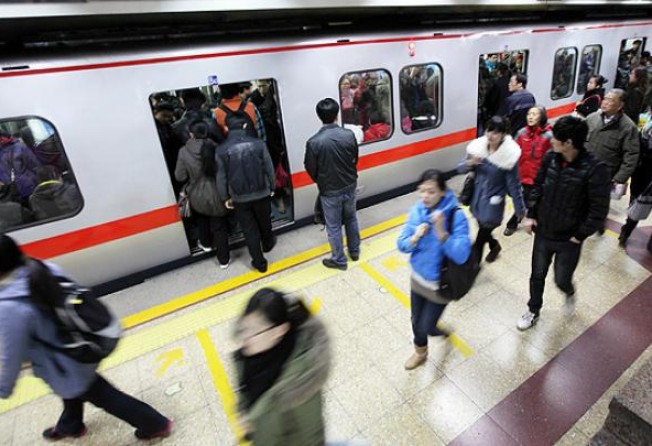China 'certain' to hit 7.5pc economic growth target

China is certain to hit the government’s economic growth target of 7.5 per cent for this year and could even exceed it, Commerce Minister Chen Deming said on Wednesday.
Chen made the comment at a conference, adding that China would likely spend more than US$70 billion this year on non-financial outbound direct investment.
“In the first three quarters, China’s economy has grown 7.7 per cent from a year ago, therefore, it is for certain that we can achieve the annual GDP target of 7.5 per cent or above, “ Chen said in a speech.
His forecast was seconded by Chen Dongqi, deputy chief at the Academy of Macroeconomics Research, a think-tank under the powerful National Development and Reform Commission. He told the conference, in comments carried by state radio, that growth would reach between 7.6 and 7.7 per cent this year.
China’s growth rate has slowed for seven successive quarters and is on course for its weakest full year of expansion since 1999, albeit at a pace that far outstrips the rest of the world’s major economies.
The minister’s remarks on growth echo those made by an official from the National Bureau of Statistics in October when economic data for the third quarter revealed annual growth had dipped to 7.4 per cent.
Analysts polled by Reuters expect China, the world’s second biggest economy, to grow by 7.7 per cent this year.
Beijing has followed a programme of fine-tuning economic policies – cutting interest rates, freeing more cash for lending and approving a raft of infrastructure projects - for the last 12 months in an effort to underpin an economy currently caught in its slackest period of activity since the 2008-09 global financial crisis.
China’s exposure to the global trade cycle has seen growth crimped by a slow recovery in the United States and a lingering financial crisis in the European Union - the two biggest markets for goods from the country’s factories.
China’s US$1.9 trillion of exports were worth about 31 per cent of GDP last year, according to World Bank data and about 200 million Chinese jobs are estimated to be supported by the external sector.
Being levered to external demand makes Beijing particularly sensitive to the risk of protectionism – even more so as the government seeks to broaden the structure of the economy and put more of its huge US$3.2 trillion stockpile of foreign reserves to work through outbound direct investment.
Chen said the trend for China to increase its outbound investment would continue for years to come.
“As you know, China has more than US$3 trillion of foreign exchange reserves, which has provided favourable conditions for our outbound investment,” he told the conference.
“I think the non-financial outbound investment this year will be larger than last year and likely top US$70 billion.”
China’s outbound direct investment from non-financial firms in the first 10 months totalled US$58.2 billion, up 25.8 per cent year-on-year, Ministry of Commerce data shows.
Outbound direct investment rose 8.5 per cent to US$74.7 billion last year, extending a decade-long expansion streak. The government is targeting a total of US$560 billion in outbound foreign direct investment in the five years to 2015.
The head of China’s US$482 billion sovereign wealth fund told reporters in an interview earlier this month that he detected a rise in protectionism in Western economies and that the fund would not invest where it was not welcome.
Tensions have risen recently between an increasingly wealthy and acquisitive China and many of its Western trading partners still struggling to recover from the effects of the global financial crisis and where companies hungry for investment capital are up for sale.
A series of trade actions against China by President Barack Obama, including his blocking of a privately owned Chinese company from building wind turbines close to a US military site, and his challenge of Chinese auto and auto-parts subsidies in a World Trade Organisation case, have increased the friction.
China’s state-owned CNOOC and its Canadian takeover target Nexen on Tuesday withdrew and resubmitted an application for US approval of a proposed US$15.1 billion tie-up, as Canada gets close to its decision on whether to approve the transaction.
A brief statement did not provide a reason for, or the timing of, the unexpected move. It was not immediately clear whether the announcement meant the process had hit a snag or signaled a delay in closing the deal, which has become a topic of heated debate in Canada.